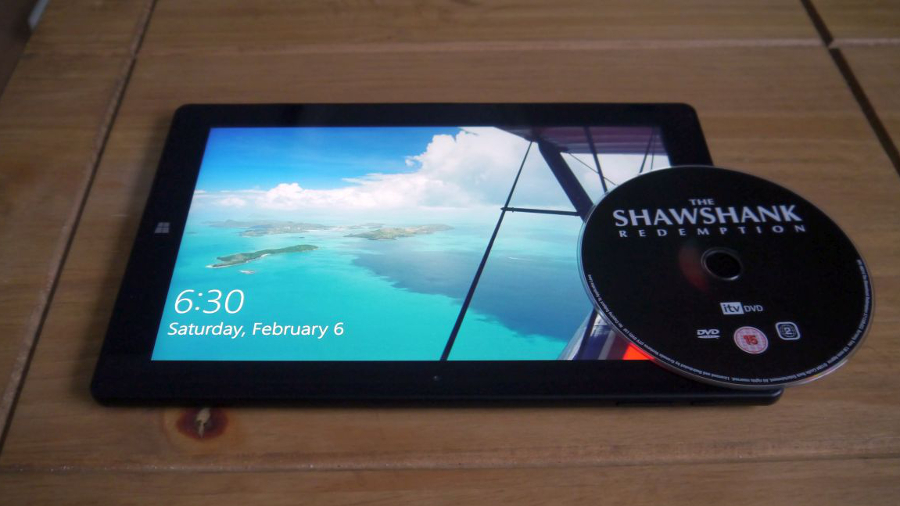Why you can trust TechRadar
Specification
Here is the spec sheet for the Chuwi Hi10 tablet sent to techradar for review:
- Processor: Intel Atom X5 Z8300
- Graphics: Intel HD Graphics 12EU
- RAM: 4GB DDR3L soldered
- Storage: 64GB eMMC
- Display: 10-inch, 1920 x 1200 resolution
- Connectors: USB 3.0, USB 2.0, micro-USB, microSD, micro-HDMI, audio connector
- Connectivity: 802.11n Wi-Fi, Bluetooth 4.0
- Operating system: Windows 10 Home 64-bit
- Battery: 6,600mAh
- Dimensions: 257.5 x 170.8 x 9.9mm
- Weight: 553g
Given that a Windows 10 license costs around £70 by itself, the Chuwi Hi10 delivers excellent value for money. The quad-core Cherry Trail-based processor is the direct replacement of the ubiquitous Z3735F, but fabbed on a 14nm process, and has an even lower TDP compared to the latter while being clocked higher (1.44GHz vs 1.33GHz); both have the same burst speed at 1.84GHz.
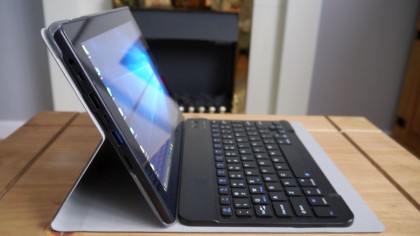
Like its predecessor, it has 2MB cache, four cores/threads and – apparently – supports up to 2GB (although the tablet definitely has 4GB of memory).
Performance
Here's how the slate acquitted itself in our benchmark tests:
- 3DMark: Ice Storm: 15393; Skydiver: 785; Cloud Gate: 1537; Fire Strike: 172
- PCMark 8 Home: 1023
- PCMark 8 Creative: 1360
- Cinebench 15: CPU: 100; GPU: 8.68 fps
- GeekBench: Single-core: 809; Multi-core: 2346
The performance of the Chuwi Hi10 can certainly be described as decent. The Z8300 is far better than similar devices either powered by its predecessor, the Z3735F or the N2840, besting the latter by about 40% on average on a number of benchmarks.
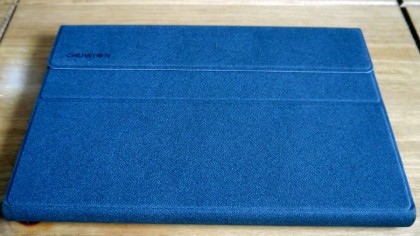
Part of the improvement comes from the GPU which supports DirectX 11.2, has 12 EUs (Execution Units) and a clock speed of up to 500MHz.
In subjective testing, the Z8300 showed no sign of stuttering when doing light tasks. Playing full HD videos from YouTube in full-screen mode (remember the Hi10 has a full HD display) went without a hitch. The unit turned moderately hot under load but that was expected.
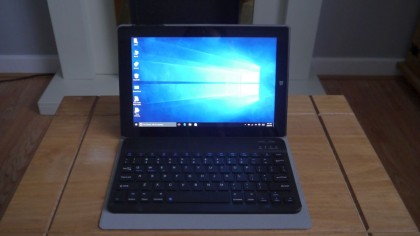
Part of the performance boost comes from the fact that it has 4GB of RAM and 64GB on-board storage compared to the usual 1GB or 2GB RAM usually found on other models.
There are weak points, though, one of which is the poor location of the speakers. Rather than on the sides, they should probably be placed at the back next to the rear camera, as if you're going to watch a movie or other media, you'll likely be using landscape rather than portrait.
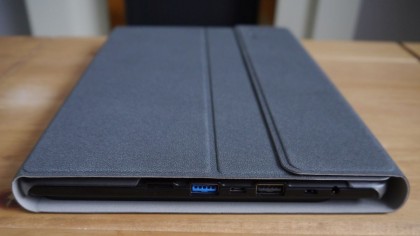
Also a note about the power button and generic power management. The tablet didn't complete PCMark 8's battery test (we tried thrice) and kept stubbornly shutting down at around 67% battery life. We ended up playing a YouTube video (with Wi-Fi and 100% Brightness on) to determine this – it lasted 4 hours 16 minutes.
Powering the slate up is also a bit of a guessing game. It is not a press-and-power-on device as is the case for laptops, rather it's more like press and wait till the orange light comes on, which takes about four seconds.

Désiré has been musing and writing about technology during a career spanning four decades. He dabbled in website builders and web hosting when DHTML and frames were in vogue and started narrating about the impact of technology on society just before the start of the Y2K hysteria at the turn of the last millennium.
